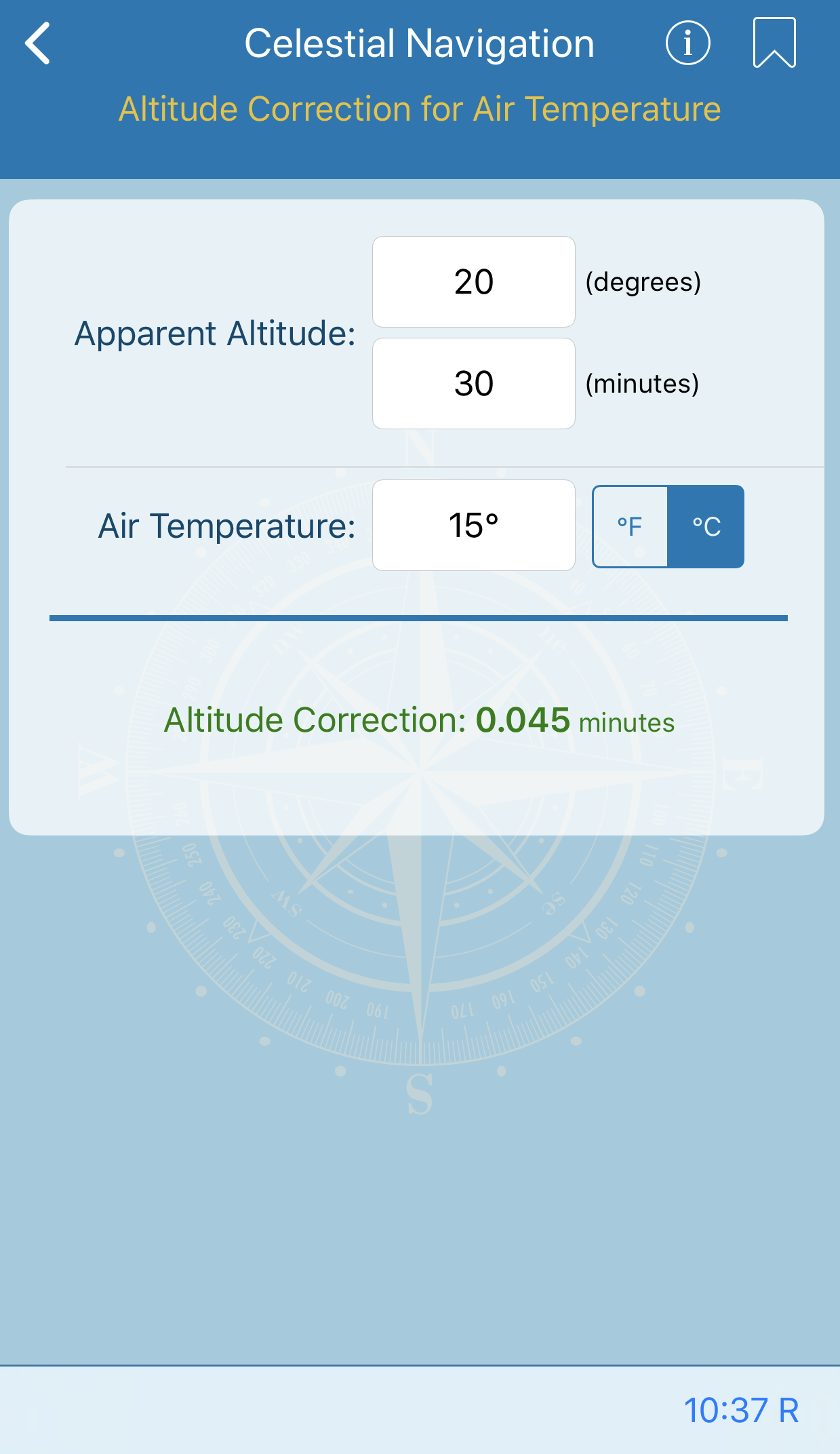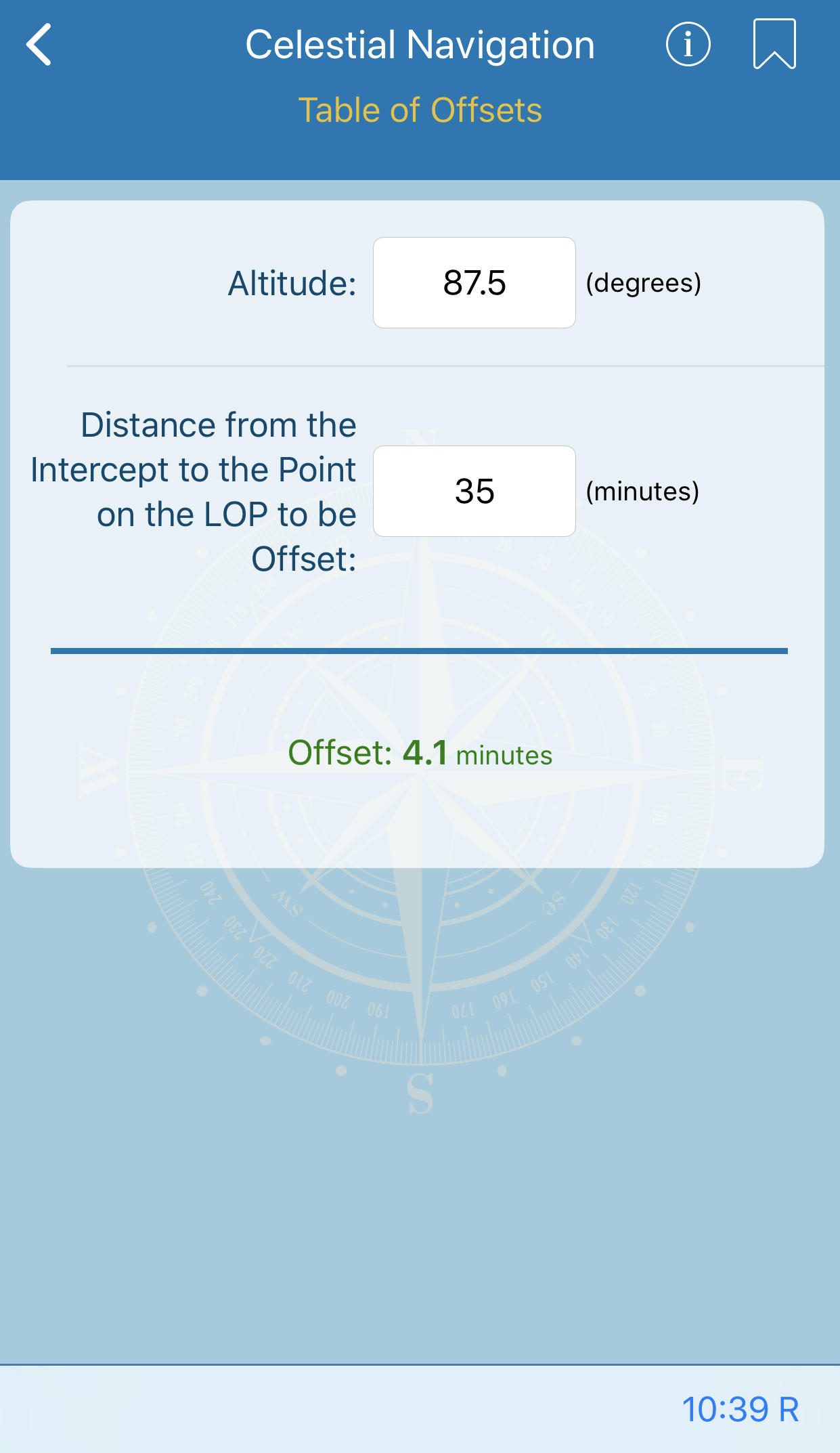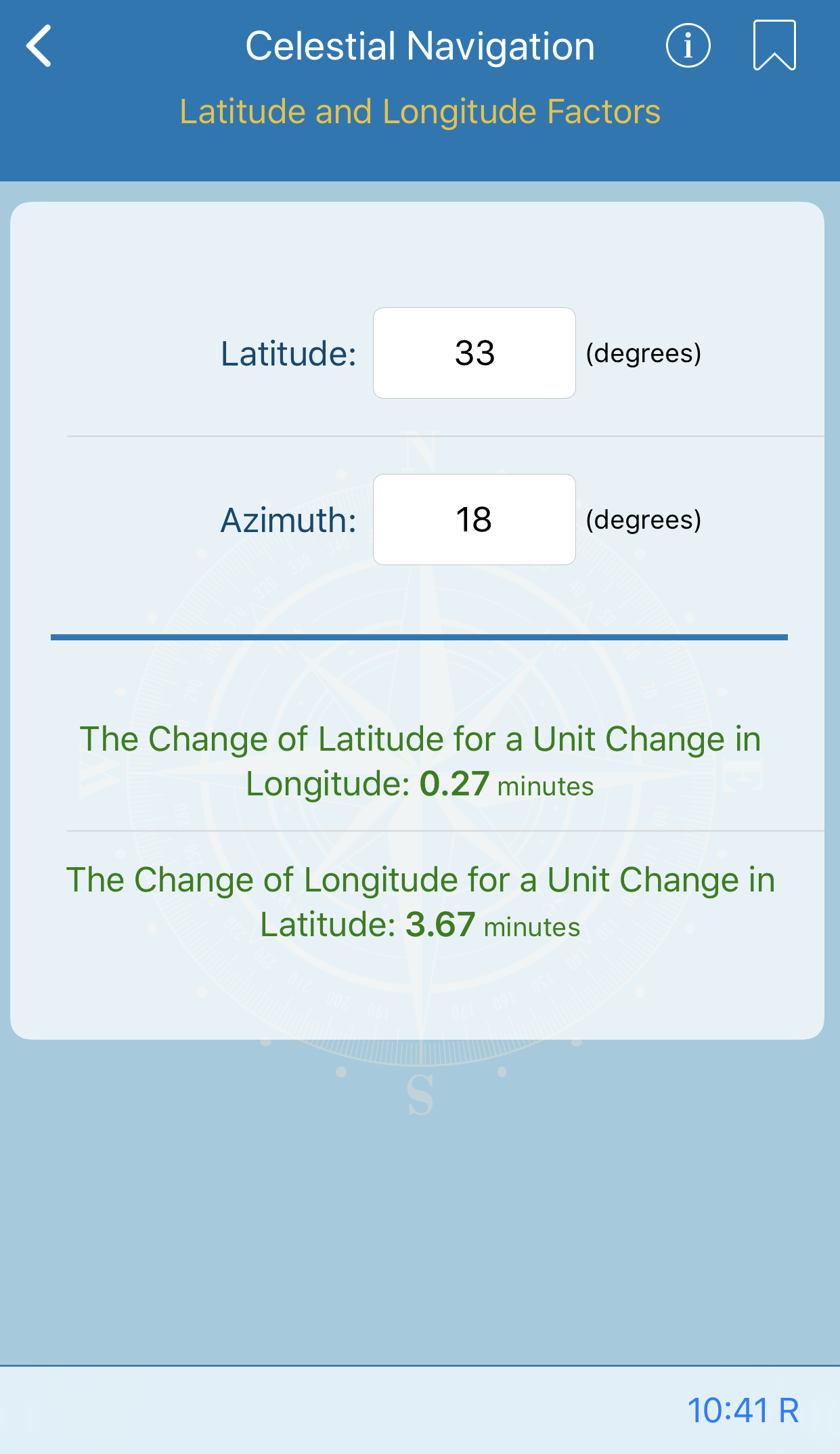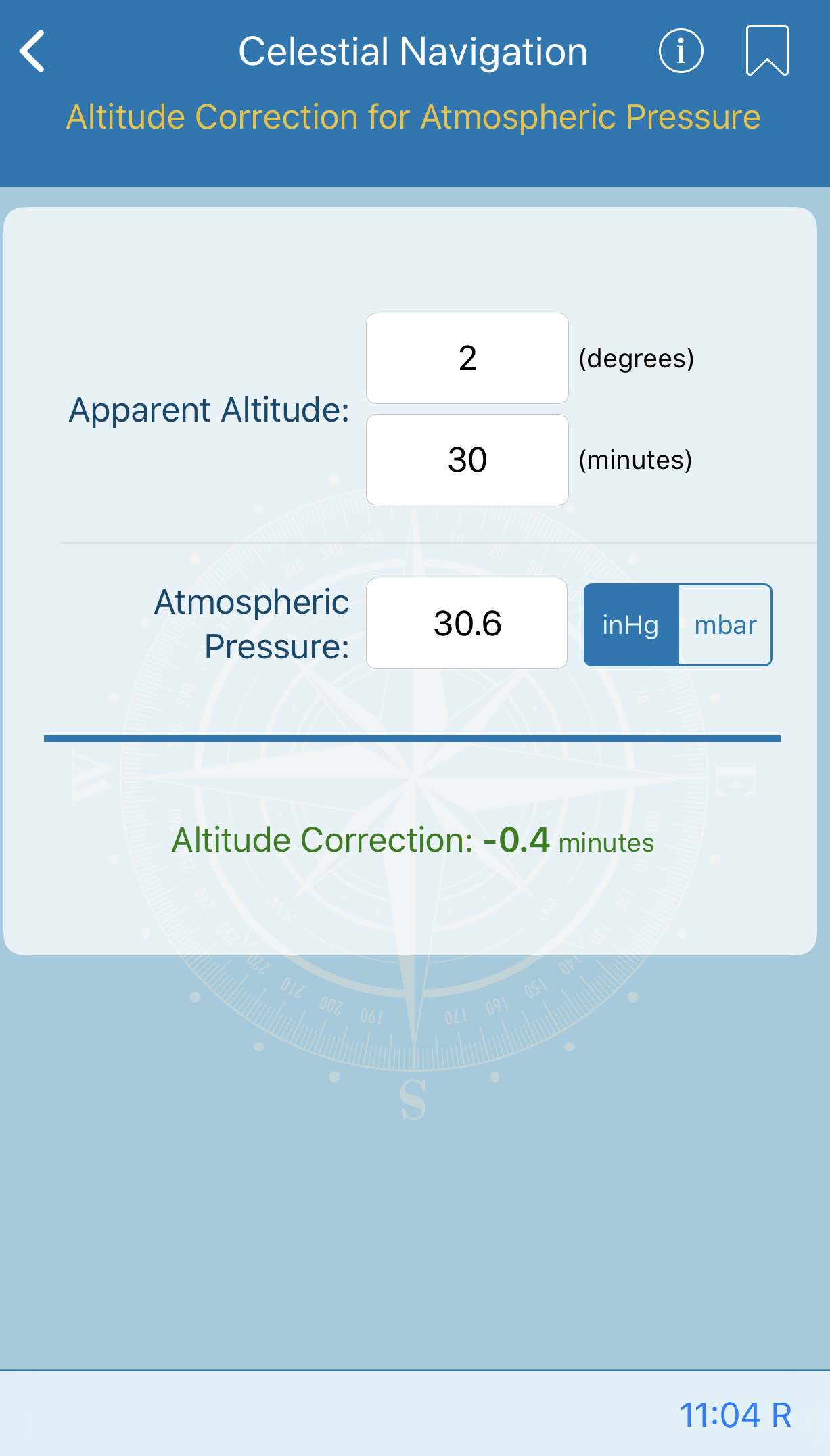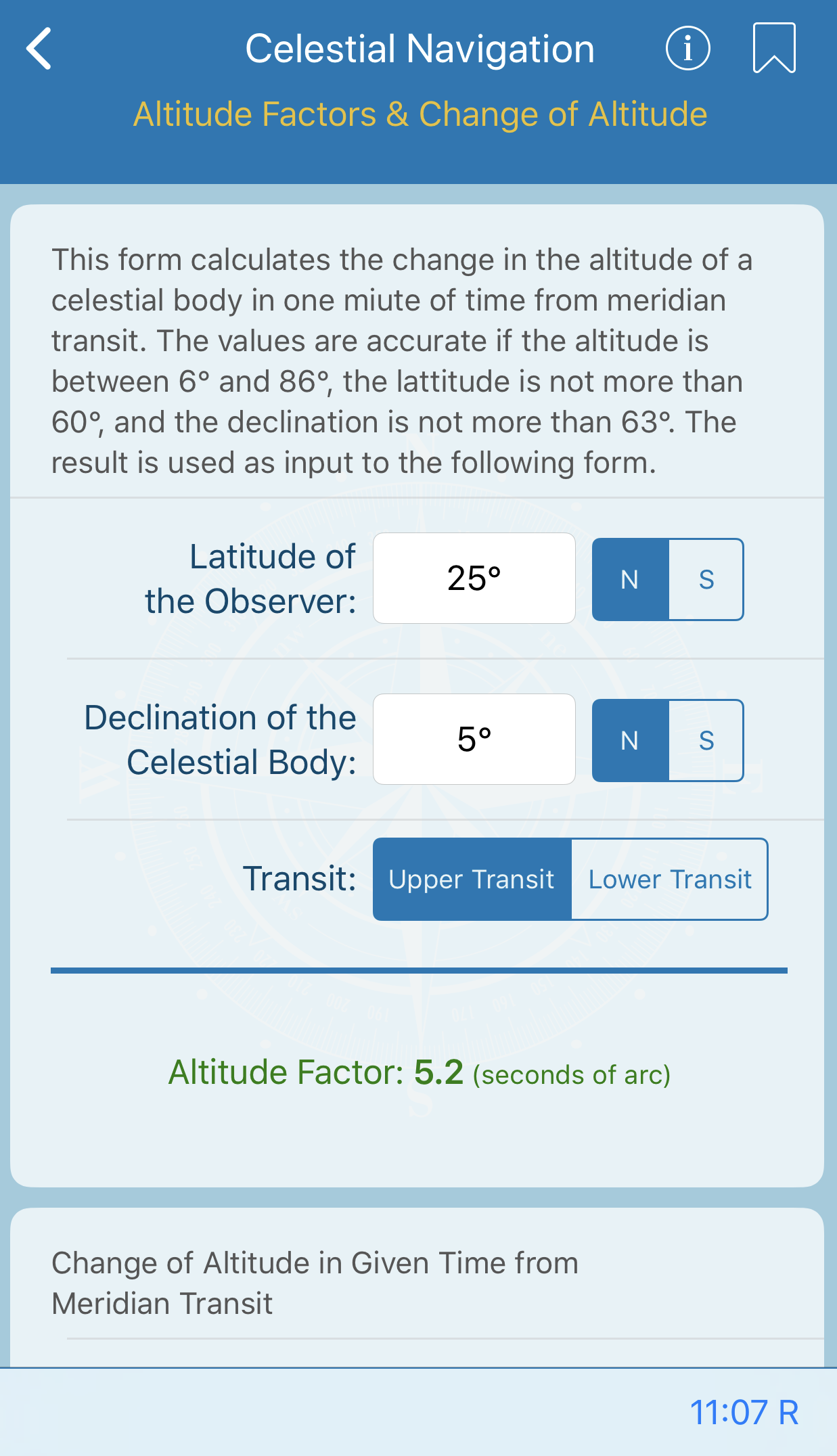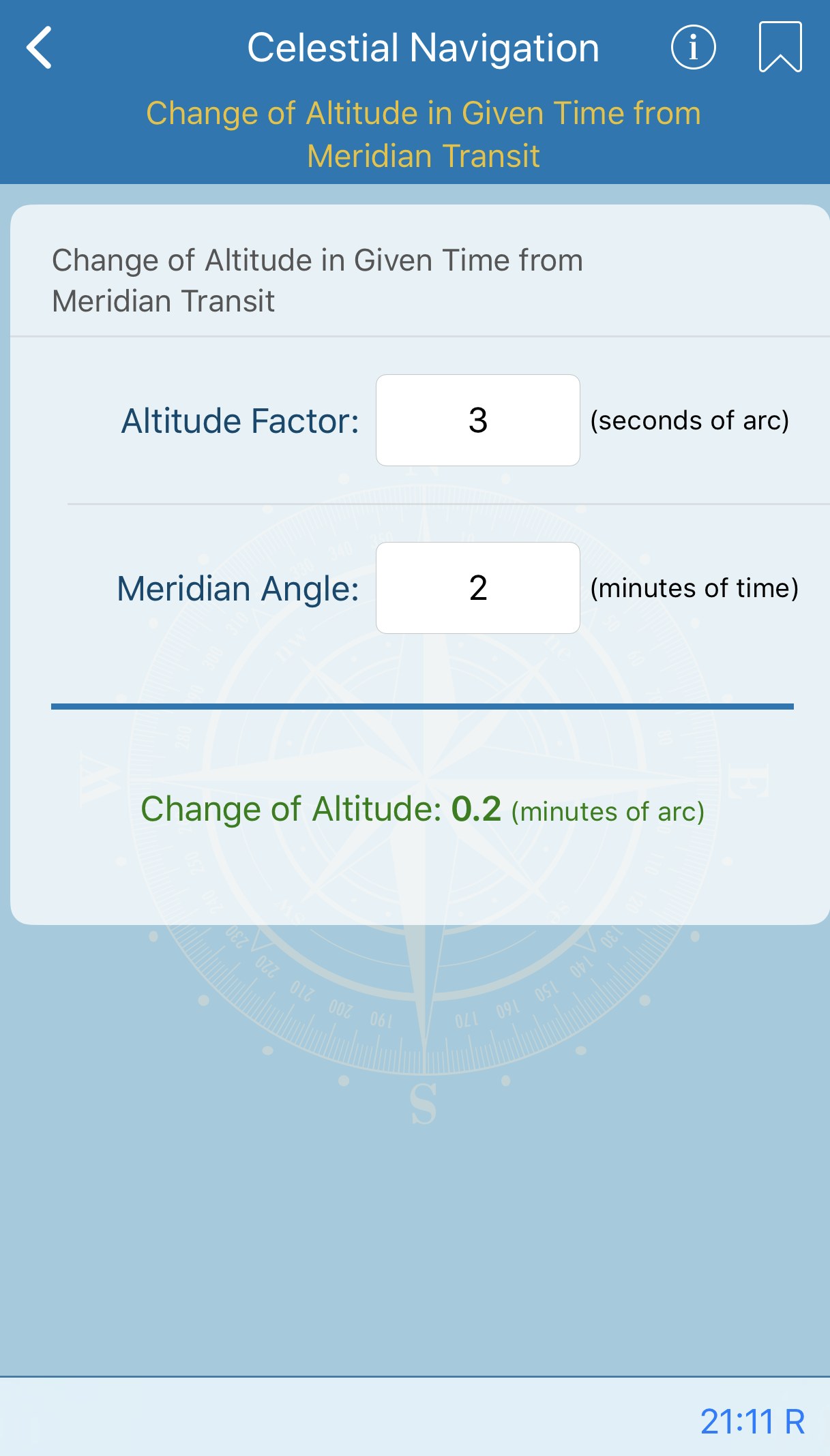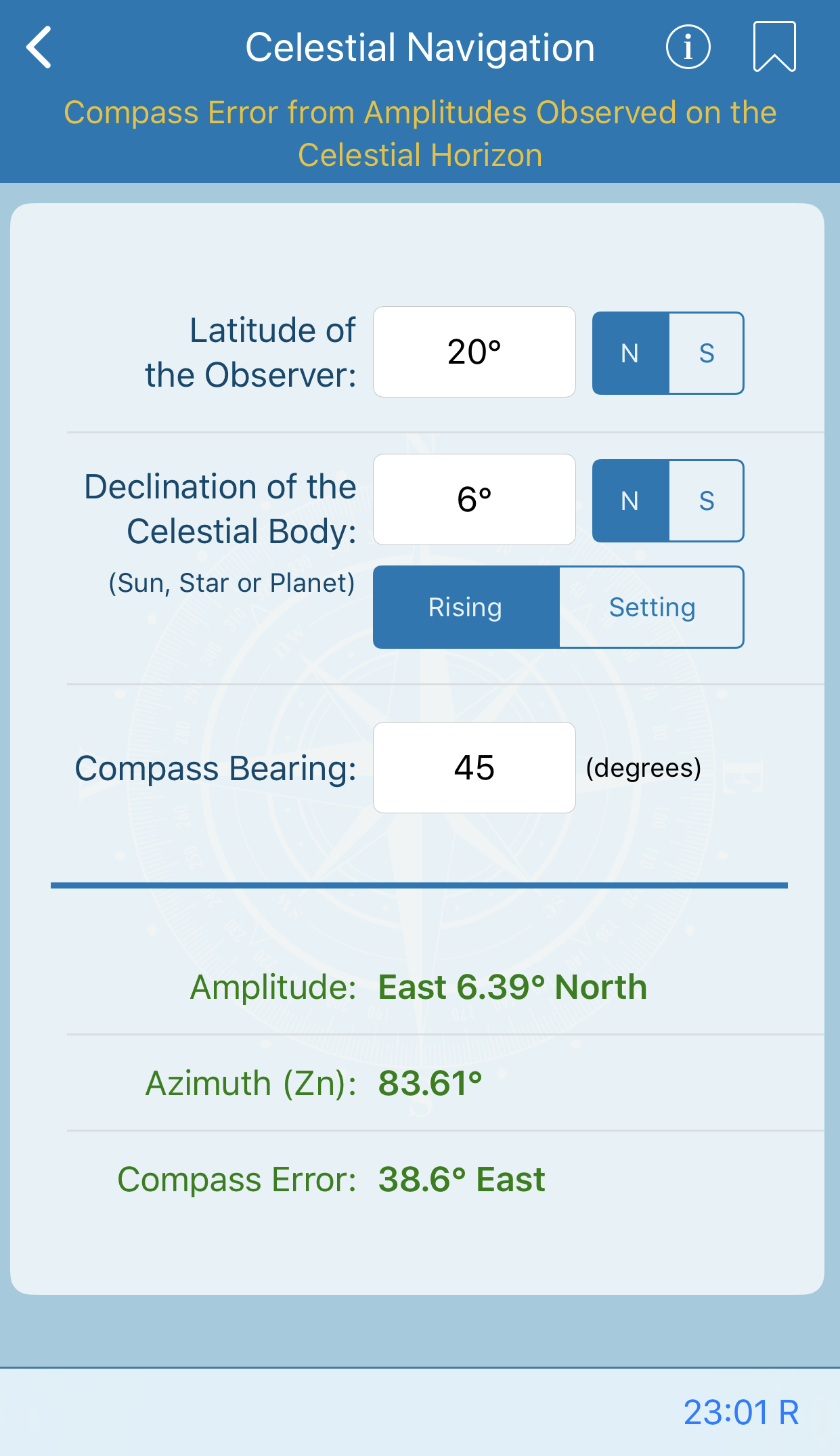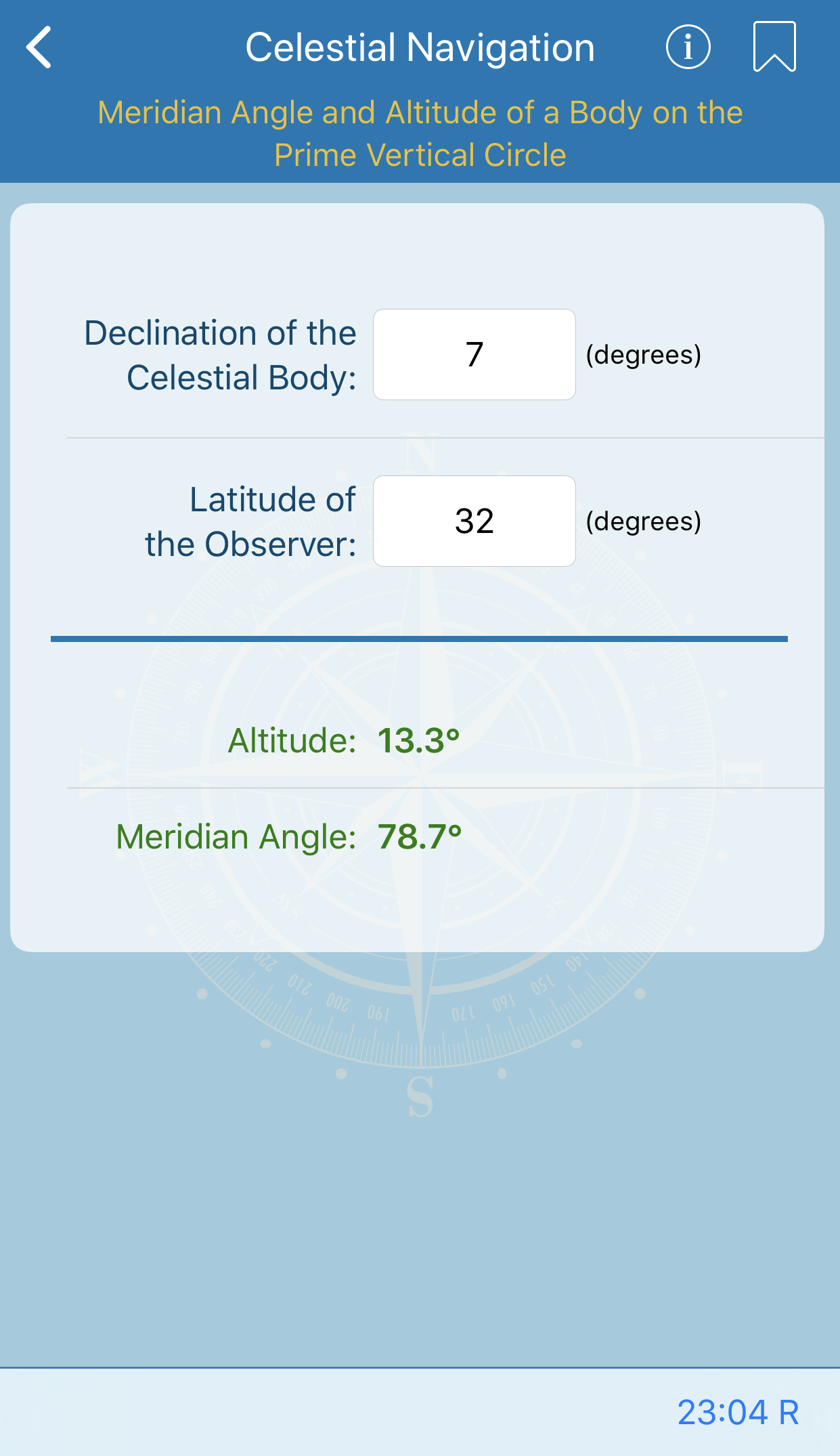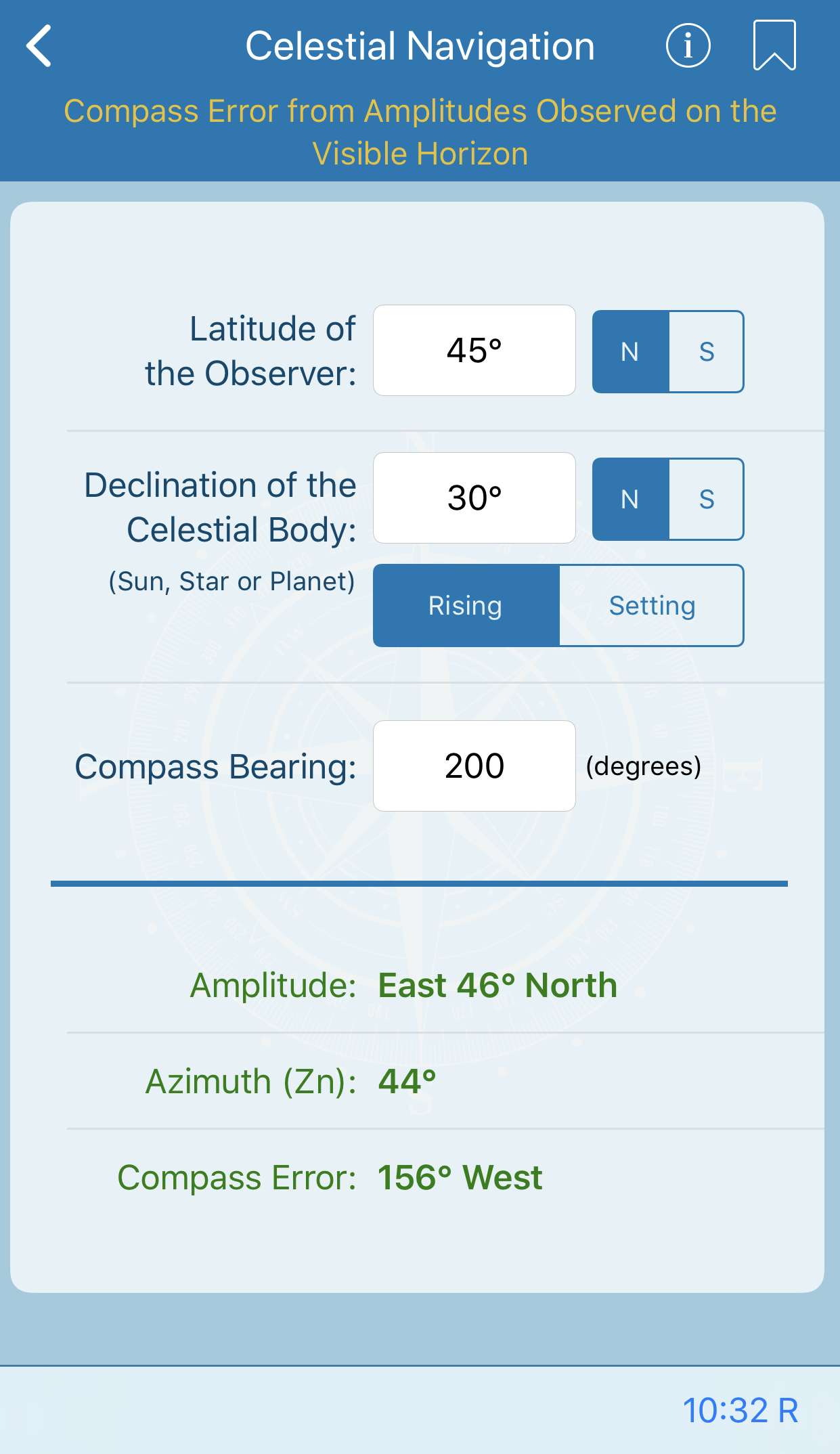
Compass Error from Amplitudes Observed on the Visible Horizon
This calculation contains a correction to be applied to the amplitude observed when the center of a ceslestial body is on the visible horizon, to obtain the corresponding amplitude when the center of the body is on the celestial horizon.
